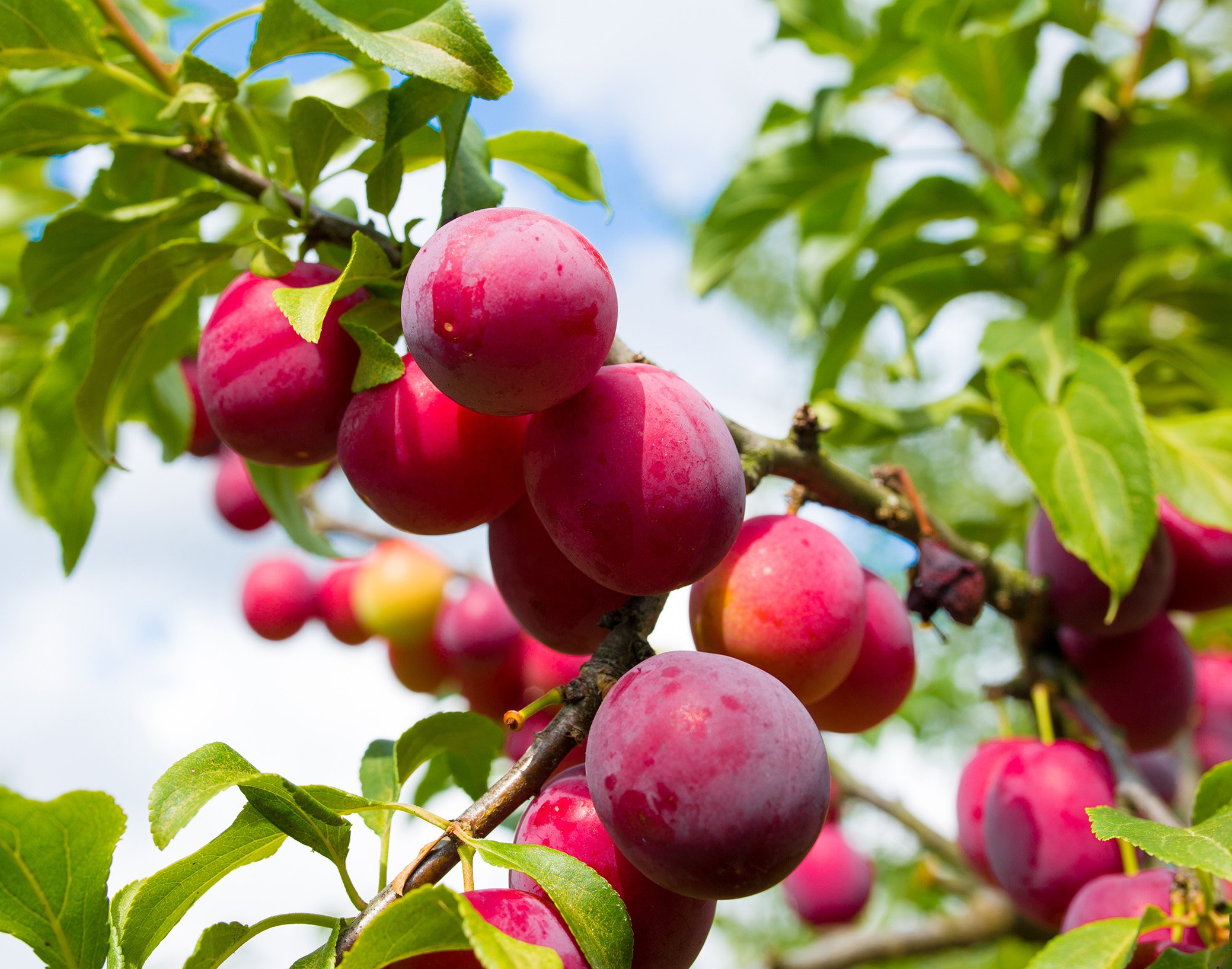
Fruit Trees
Plum Trees
Plums are rich in antioxidants, vitamins (like vitamin C and K), and fiber, promoting a healthy digestive system and offering anti-inflammatory properties. Growing your own fruit gives you access to these benefits fresh from the tree. Their sweet-tart flavor is perfect for a variety of culinary uses.
Once established, plum trees are relatively low maintenance. They require basic care such as watering, occasional pruning, and pest control, but they're not as demanding as some other fruit trees.
Plum Tree Types
-

Bruce
Native Chickasaw plum x Japanese Cross. Fruit is sweet and juicy, perfect for growing in your backyard! In late spring, white flowers will burst out of the bare stems that mature into dark red fruits. With loads of late spring blooms, there is no chance of losing them due to a late spring frost. You will get plenty of fruit on the tree which typically ripens in June in our area. The medium to large fruits can be eaten fresh off the tree, baked into goods like cobblers or pies, or preserved into jellies for later use. The Bruce plum taste can be described as mildly sweet and mellow from the buttery yellow flesh. The red skin leaves a crisp crunch in your mouth.
-

Methley
Methley Plum trees are known for their ease of growth, abundance of sweet fruit, and the ornamental beauty. This early June ripening southern favorite has deep red-purplish skin and amber with red streaked flesh. Methley is a Japanese plum tree that is self-fertile with high-quality, medium to large fruit.




